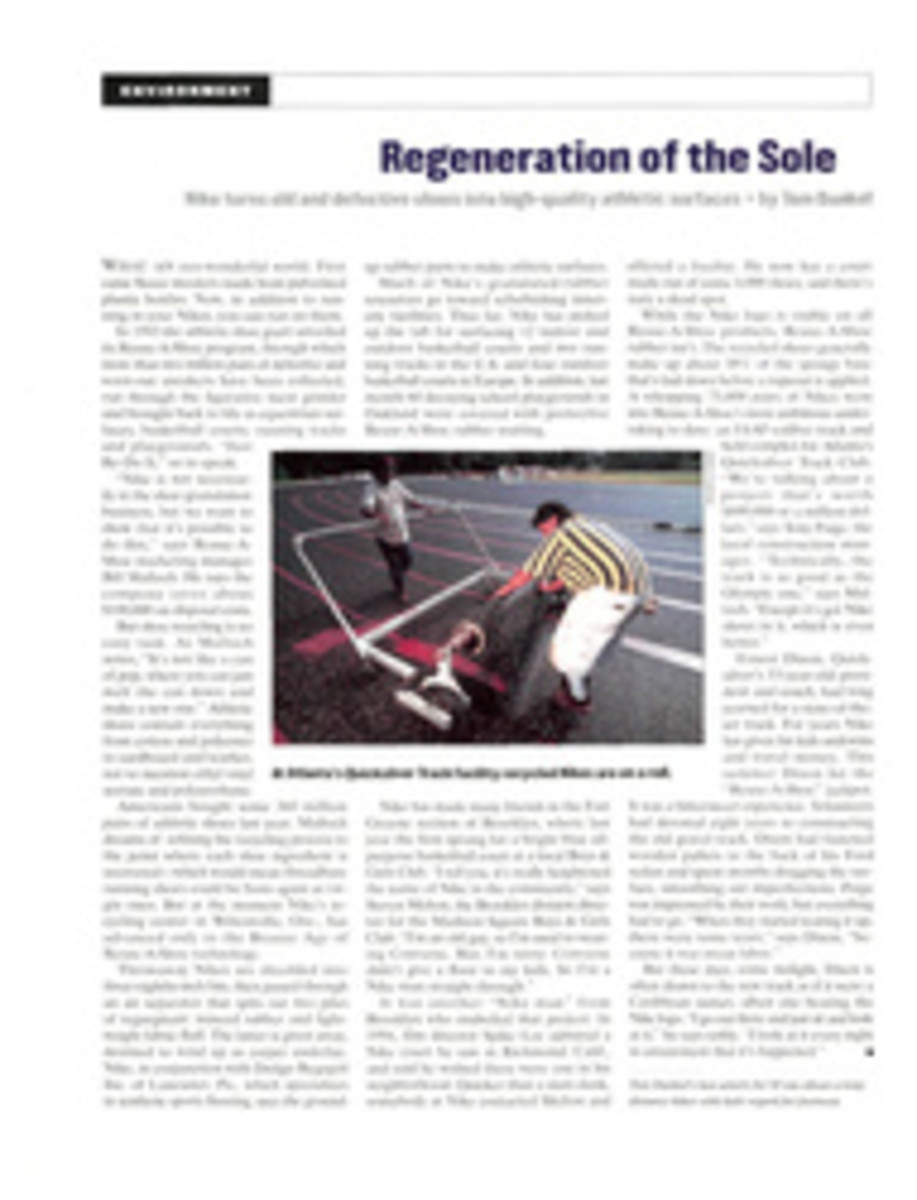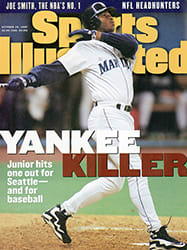
'HE JUST FROZE' THIS YEAR MARKS THE 75TH ANNIVERSARY OF RAY CHAPMAN'S FATAL BEANING
Is it true that the Ray Chapman death ball, which reportedly
resurfaced in the '70s, had a life of its own? Where is it now?
These questions have become harder to answer over the years as
newspaper accounts have yellowed, and witnesses of the only
fatal beaning in major league history have died.
The beaning happened the afternoon of Aug. 16, 1920, in the top
of the fifth at the Polo Grounds in Manhattan. The Cleveland
Indians versus the New York Yankees. Stan Coveleski versus Carl
Mays. The Indians would go on to win the World Series, but they
would have to do it without Chapman, a slick-fielding shortstop
and renowned bunter, and one of the team's best-liked players.
Mays, a reputed knockdown artist with a whippy submarine
delivery, faced Chapman for the third time in the game leading
off the fifth. On the first pitch Chapman took a fastball in the
left temple. The sound was chilling. Chapman had been crouched
over the plate, probably to bunt, as he had done in the first
inning. He never moved as the ball came at him.
At St. Lawrence Hospital that night, doctors removed a 1
1/2-square-inch piece of Chapman's skull in a desperate attempt
to save his life. But it was no use. Chapman failed to regain
consciousness and was pronounced dead at 4:40 a.m. He was 29
years old.
"They would've saved him today, I think," Bill Wambsganss said
before his death in 1985. Wambsganss was the Indian second
baseman the day of the beaning. "Chappie always leaned over [the
plate], because he liked to push-bunt. Nobody knows what
happened. He just froze."
Chapman's at bats against Mays were hardly a classic
hitter-pitcher duel. By his own admission Chapman, a righthanded
batter, could not hit the Yankee righthander. Wambsganss, who
later turned the only unassisted triple play in World Series
history, remembered being with a group of players on the
elevated train from the Hotel Ansonia to the Polo Grounds that
morning. Chapman, who had a sweet tenor voice, led them in
singing, as always.
"Who's pitching today?" Chapman asked.
"Mays."
"Hmmm," Chapman replied. "I'll do the fielding; you fellas do
the hitting."
At the time, Ray and his wife, Kathleen, were expecting their
first child, who would turn out to be a girl. Ray often said he
planned to retire at the end of the season so he could spend
more time with his family.
"By the '40s, all of them were gone, even the daughter," said
Wambsganss, who recalled seeing a poignant picture of Chapman
after the beaning. He was lying flat on the trainer's table in
the visitors' clubhouse of the Polo Grounds, tugging frantically
at his left ring finger and moaning. "He wanted to know where
his [wedding] ring was," Wambsganss said. Before the game
Chapman had given it to the team trainer for safekeeping.
Kathleen, who remarried in 1923, died in 1928, a suspected
suicide. A year later the Chapmans' daughter, Rae Marie, died of
measles.
In six major league seasons Mays had hit 54 batters. Chapman was
No. 55. After Chapman's death, players on several teams
threatened to boycott games in which Mays pitched, but they
never did and Mays continued to play until 1929.
But what about the death ball? Bob Curley, a former sportswriter
for the Orlando Sentinel Star, wrote in August 1977 that former
Cleveland leftfielder Charlie Jamieson, who claimed to have
picked up the ball after the beaning and who died in 1969, had
given it to him in 1950. At the time Curley was a high school
baseball coach in Ho-Ho-Kus, N.J. "You're a newspaperman, a
coach," Curley quoted Jamieson as saying. "I don't want the
ball, but I do want someone to hold onto it after I'm gone. It's
yours. Keep it. It's gonna be a collector's item."
Curley, who died in 1991, said he tossed the ball into his car's
glove compartment, and that the next day his players found it
and used it for infield practice. It was the first time the
death ball had been used since it struck Chapman. According to
the 1977 story, the ball took a bad hop and hit third baseman
Andy Deak under his right eye, shattering his cheekbone.
"It rarely sees the light of day, and I confine it to a plastic
bag in a locked cabinet in Casselberry (Fla.)," Curley wrote.
"I'm always fearful that the ball might roll out, and that
someone will slip on it and break his neck."
Ray Buck, who lives in Fort Lauderdale, is a national columnist
for SportsLine USA.
B/W PHOTO: UPI/BETTMANN The ill-fated Indian was a sure-armed shortstop. [Ray Chapman]

